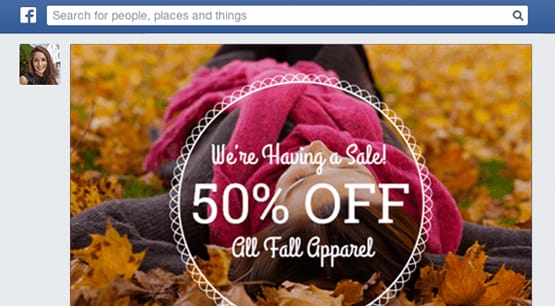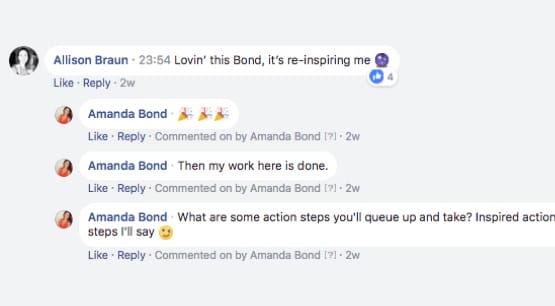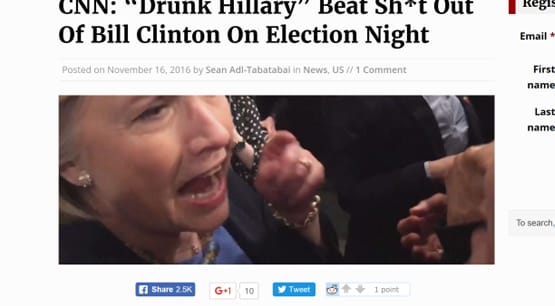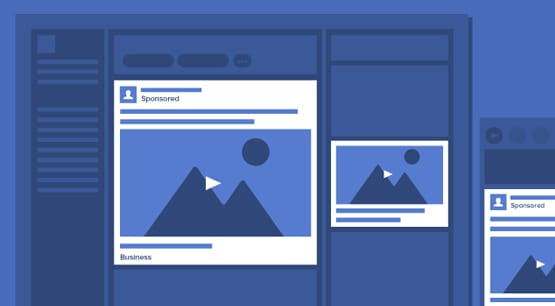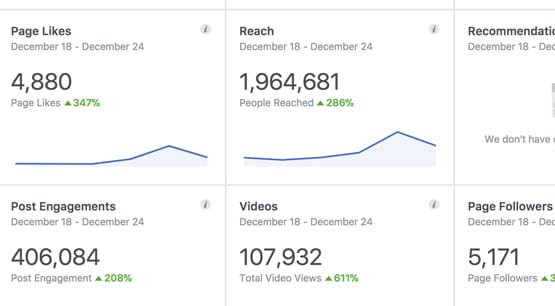Why Did My Sales Drop Recently on My Facebook Page?

We’re closing in on halfway through 2018 – yes, already – and the internet is changing all around us. In the wake of fake news and the massive Facebook privacy issues, a lot has been going on with that site. Unfortunately, some of the changes they’re making to try to bring back trust and keep people around are, well, frankly a little damaging to a lot of small brands.
Facebook Made an Algorithm Change
Facebook makes algorithmic changes all the time. Much like Google, the way they figure out what posts to show you every day changes from week to week or month to month. Unlike Google, there aren’t legions of businesses tracking specific data they can use as flags to reverse-engineer any changes made. All we have to go on is the announcements Facebook made and the rises and falls in our own analytics.
In February, Facebook announced that they would be rolling out a new version of their algorithm, one designed to reduce the presence of corporate posts and increase the visibility of posts that lead to meaningful interactions between friends and family.
This is great for casual users of Facebook; they see more posts from the friends they want to keep up with, and fewer posts from the movie studio they followed that one time, or that meme posting page that seems to have 20 posts a day.
If you’re losing reach, losing traffic, or losing sales that come from your Facebook page, chances are you’ve been hit by this algorithm change. It’s the new algorithm for 2018 and beyond, and it’s here to stay. At least until the next big scandal and exodus.
Active Versus Passive Interactions
The primary key to the new Facebook algorithm is actually a bit of a paradigm shift in how Facebook is looking at traffic and interactions on their site.
In the past, Facebook and other social networks have heavily focused on getting as many people as possible to spend as much time as possible on their site. It’s why Facebook allows embedding storefronts, music players, and photo albums. It’s why they’re competing with YouTube to host videos, and why they’re pushing their Marketplace in competition with Craigslist. Facebook has been trying for over a decade to become some sort of central hub where people spend as much time as possible, accomplishing as many tasks as possible. Everything they roll out pushes towards this goal, from organic posts to Messenger updates.
What Facebook has announced and is doing with this new change is pushing for higher quality time spent on the site, rather than sheer volume of time spent on the site.
Does that sound familiar? Facebook is going through the same kind of revolution that Google did back around 2011, when they announced Panda. They’re pushing for higher quality content rather than higher volumes of content, except in Facebook parlance, it’s engagement that matters.
What Facebook has done is divided engagement up into two types; active and passive. Passive engagement is the bare minimum sort of engagement. Seeing a post is not engaging with that post. Clicking through a link is “engagement”, but it’s a passive sort of engagement. A click-through does not encourage further engagement, it does not encourage engagement from others, and it is not visible to other users. Likes or other reactions are also passive engagement. They’re a simple click, and sure, while the number goes up and encourages other people to like the post as well, it doesn’t do anything more. Liking a post doesn’t invite other people to comment on it, start a dialogue with the page, or accomplish any sort of actionable goal.
I can’t help but feel that part of this change and devaluation of likes and reactions comes from how abused they have been recently. All of those live videos, or even static images, that use reactions as a voting mechanism? They’re against Facebook’s rules, but they happened constantly anyway. By devaluing the reaction as a form of engagement, Facebook encourages better forms of engagement rather than the exploit of a single click.
All of this contrasts with Active Engagement, which are the kinds of engagement actions that can start conversations. Sharing a post is an active form of engagement, because it’s one person taking a post and saying “look at this and tell me what you think.” Sure, a lot of times all they get are a few likes, but sometimes that share results in a conversation in the comments.
Speaking of, comments are also active engagement. When you comment on a post, your friends can see it, as well as anyone else who sees the post, and that can bring up more opportunities for conversation.
Any comment is also an opportunity for the owner of the page to step in and continue the conversation themselves. A conversation between two fans is great, but a conversation between two fans and the brand itself is excellent.
What Facebook is encouraging with this change is pushing people to communicate with one another, to comment and share content, rather than just passively scrolling through their news feed, tapping a few reaction boxes like it’s some kind of survey. They want people to spend quality time on the site, talking and interacting with one another, rather than just being there doing nothing.
Of course, this all also helps Facebook monetarily. All of these brands seeing a drop in organic reach are going to be inclined to spend money on advertising to boost their visibility and their engagement. There are, after all, ads specifically aimed at getting more engagement. While making more money is surely not a primary motivator, it’s definitely a fringe benefit for the social network.
According to Hootsuite in the post I linked up top, comments are now the top kind of engagement, followed by reactions. Replies to comments are also important, and shares – particularly shares over messenger – are valuable as well. Other kinds of engagement, as well as other ranking signals like time spent on content, the type of the content, and whether or not the post is informative all have an impact as well, but comments are number one.
You’re a Fake News Brand
An alternative reason you might be losing out on sales recently is Facebook’s push-back against fake news. They’ve had a pretty negative reaction to being the vessel for Russian propaganda and other forms of nonsense presented as factual, and they’re working on ways to filter out that kind of content.
What this means for pages is that if you’ve shared or posted what could be considered fake news – real fake news, not Trumpian labeling of anything someone disagrees with – you’ll be demoted in the algorithm. This doesn’t affect controversial but factual content, and it doesn’t affect satire, but if you’re trying to pass something off as factual when it isn’t, it can negatively impact your page. Unfortunately, this means you need to get pretty good at fact-checking before you share anything, and it definitely hurts certain types of pages more than others.
Your Advertising Ran Out
I’m almost contractually obligated to include this option as a possible cause for a decline in sales. It’s always possible that you were running some advertising and it stopped. If it stopped unexpectedly, you’d want to check to see if a new ad policy catches your ads, or if your payment method expired or was declined, or if your budget ran out. If you don’t run ads, or if you’ve checked your ads and they’re fine, you can just skip this section. Oops, you’re already at the end! Oh well.
How to Get Your Sales Back
Keeping all of the above in mind, you really just have to go with the flow and adapt to the new normal. If you want to get your reach, your traffic, and your sales back, you need to figure out what Facebook wants out of you, what your audience wants out of you, and how to play the two off each other.
My first tip is to make heavy use of Facebook video, particularly live video. EdgeRank still exists, after all, and video is the most heavily weighted type of content.
Live video is also excellent, particularly when you can pull of lengthy streams, because it encourages your audience to interact with each other. All of those messages people send in chat are comments, after all, and it’s conversation people are having with each other. A little moderation is important to keep it from devolving into emoji spam, but that’s a low bar to clear compared to setting up video in the first place.
My second tip is to strive to avoid the “bait” style of posting. Clickbait had its day and was demoted. Now reaction bait and engagement bait are on their way out. You can see a few examples of what Facebook considers engagement bait on, ironically, this Twitter post.
Instead, what you should focus on is getting to know your community and getting that community to know itself. A Facebook Group can go a long way towards helping that kind of community, if you can create one and get people to join it. Just make sure you keep it active and keep yourself active within it.
Most importantly, though, you need to keep your page active with the kind of content that resonates with your audience. You need to know what your audience likes, not just what some marketers tells you people like. Figure out what your best posts are, and replicate your success. Iterate on it with content experiments and see what sticks.
The new Facebook algorithm also makes influencer marketing more important than ever. One thing that sets influencers apart from other brands is their tight connection with their communities. If you can strike up a deal with an influencer in your niche, you can get a lot of benefit out of the new algorithm.
Look at it this way. An influencer with a good community shares your post, and now suddenly all of their fans are able to see the post and can comment on it. Since they’re a vocal community, they will get into discussions on your post, and that gives you a ton of good, active engagement to help bolster your presence. Post more great, attractive content and get more people commenting on more of your content, and you can build up followers and reach relatively easily.
You can double-down on the potential value here if you’re able to take advantage of local content. Local news commentary gets local users to comment, and gets conversations about local happenings to spring up. This only works if you’re a local brand, though; you can’t try to just start commenting on random small town news when you’re a tech company based out in silicon valley.
Finally, of course, you always have the option to dump some money into the site and optimize your ads for engagement. There’s no shame in advertising, and with the focus on engagement and quality interactions, your money can go a long way.
If you want to run ads, you have to do the same kind of content optimization as you do with your organic content, you just have better data to use to do it. Thankfully, you can transfer what you learn from your ads over to your organic posts; what works for one audience will work for the other, assuming you’re not targeting dramatically different groups.
The long and the short of it all is simple, though. Active engagement, primarily focused on comments, is growing in importance, while previous metrics like time spent on content are dramatically less valuable. Adapt and grow!





